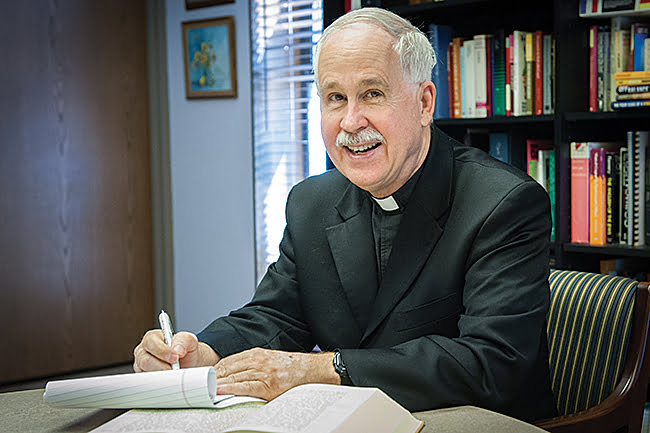
Father Mike Stubbs is the pastor of Holy Cross Parish in Overland Park and has a degree in Scripture from Harvard University.
by Father Mike Stubbs
Human trafficking poses a huge challenge for the conscience of our nation.
Young people are entrapped into prostitution and forced into making pornography. It used to be called “white slavery,” but now it involves all colors.
It also posed a problem at the time of Jesus. Slavery was legal — not an underground criminal activity. Often, individuals entered into slavery as war captives or as children of other slaves. Sometimes, the poor would sell themselves into slavery, or sell their children if they were unable to care for them. This was true also among the Jewish people (Lv 25:39-46).
Sunday’s Gospel reading, Jn 4:5-42, tells us of a woman who has “had five husbands, and the one you have now is not your husband.” It is very possible that the woman in question is a concubine, who has been sold into slavery and passed around among several men.
In that case, she would be a victim, not just a loose woman. That would also explain why she appears at the well at noon, the hottest time of the day, when the well would be avoided by the other women of the town, who would tend to mock and criticize her.
But, you might protest, the woman in question was not Jewish but, instead, a Samaritan. That is true, but to our eyes there would be little difference between the two groups, despite the enormous amount of enmity between them. Perhaps the principal difference involved the location of the temple. Instead of Jerusalem, the Samaritans had a temple on Mount Gerizim.
The proper location for worship enters into the conversation between Jesus and the Samaritan woman. She points out, “Our ancestors worshiped on this mountain; but you people say that the place to worship is in Jerusalem.”
Through her dialogue with Jesus, she comes to recognize Jesus as the Messiah. She overcomes her shyness and her awkwardness about her social status, and returns to the town to tell the people about Jesus: “Many of the Samaritans of that town began to believe in him because of the word of the woman.” Faith in Jesus has transformed her. She is motivated to share her faith with others, even those who had previously looked down on her.
The Samaritan woman serves as a powerful example for us to imitate. She engages in dialogue with Christ and, through that, undergoes a life-changing transformation. Her experience of Christ energizes her and enables her to share her faith with others.
That is what we also are called to do.

